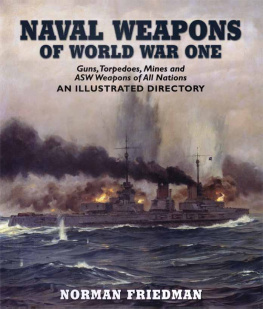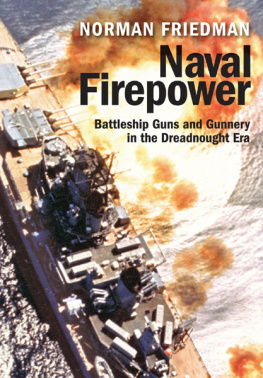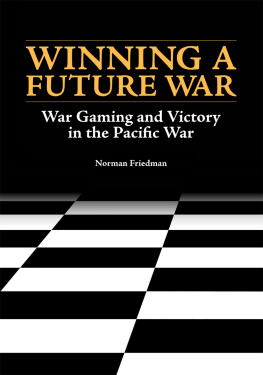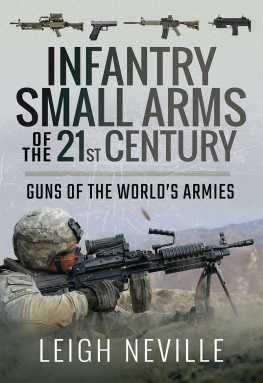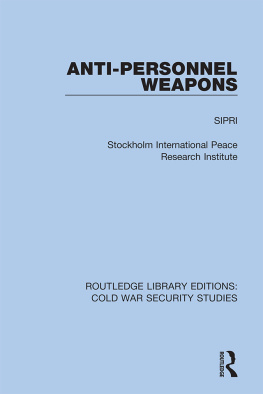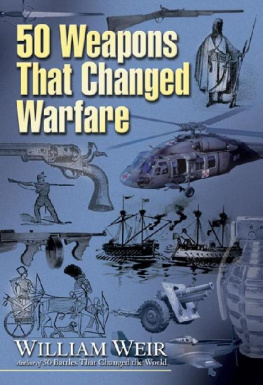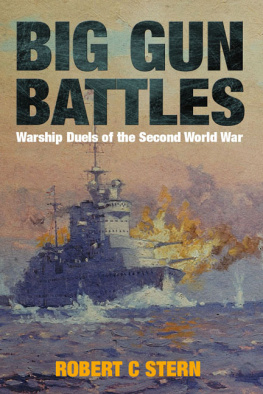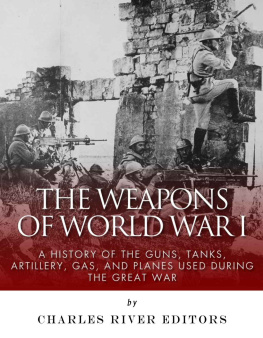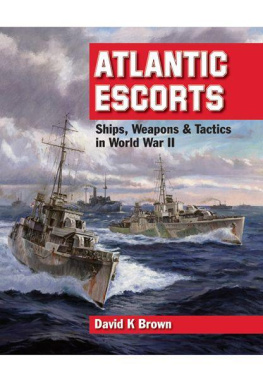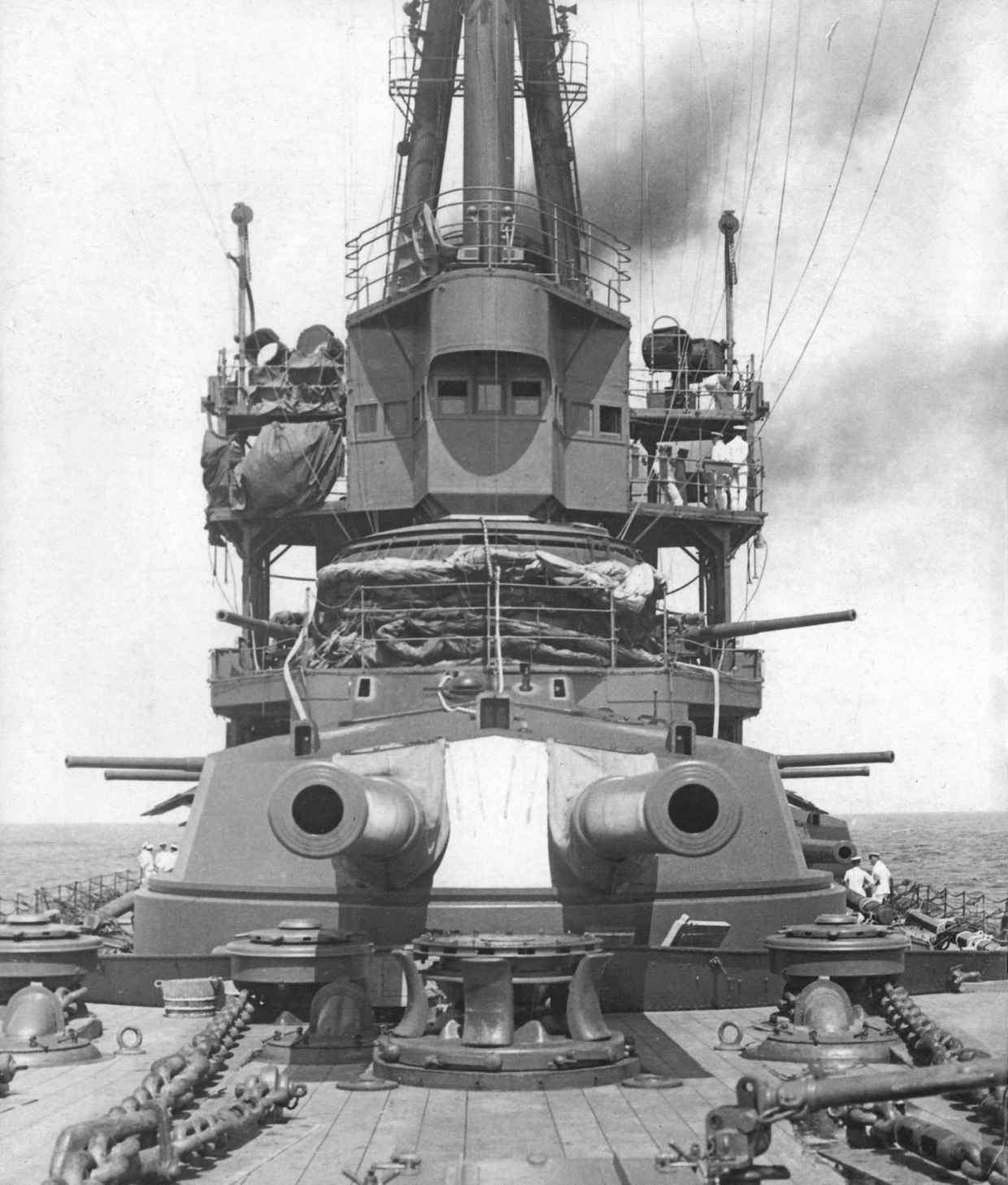NAVAL WEAPONS
OF WORLD WAR ONE
NAVAL WEAPONS
OF WORLD WAR ONE
Guns, Torpedoes, Mines and
ASW Weapons of All Nations
AN ILLUSTRATED DIRECTORY
NORMAN FRIEDMAN
Seaforth
P U B L I S H I N G
In memory of John Campbell
FRONTISPIECE: The forward turret of HMAS Australia, one of three modified
Invincibles which retained the 12in/45 guns but had the two wing guns spread
more widely for better broadside fire. Initially an upgunned design (E) with
12in/50s was chosen for the 1907/8 programme, but by March 1908 the design
showed the earlier 12in/45, and the connection with the earlier series of designs
had been abandoned (the new Invincible offered to the Board in March 1908 was
Design A). The approval of Design E presumably accounts for the widespread
belief that these ships had 12in/50 guns.
Copyright Norman Friedman 2011
First published in Great Britain in 2011 by
Seaforth Publishing
An imprint of Pen & Sword Books Ltd
47 Church Street, Barnsley
S Yorkshire S70 2AS
www.seaforthpublishing.com
Email info@seaforthpublishing.com
British Library Cataloguing in Publication Data
A CIP data record for this book is available from the British Library
ISBN 978 1 84832 100 7
All rights reserved. No part of this publication may be reproduced or transmitted
in any form or by any means, electronic or mechanical, including photocopying,
recording, or any information storage and retrieval system, without prior
permission in writing of both the copyright owner and the above publisher.
The right of Norman Friedman to be identified as the author of this work has
been asserted in accordance with the Copyright, Designs and Patents Act 1988
Typeset and designed by Neil Sayer
Printed and bound in China by Regent Publishing Services Limited
CONTENTS
AA = anti-aircraft
ADM = Admiral
AMC = Armed Merchant Cruiser
AP = armour-piercing
APC = Armour-Piercing Capped (shell)
ASW = anti-submarine warfare
BAG = Ballon-Abwehr Geschtze (anti-balloon gun)
BAK = Ballonabwehrkanone (anti-balloon cannon)
BIR = Board on Industrial Research
BL = breech-loading
BuOrd = Bureau of Ordnance (US)
CCP = Capped Common Pointed (shell)
Cdr = Commander
CI = cast iron
CINO = Chief Inspector of Naval Ordnance
CIW = Chief Inspector, Woolwich
CNO = Chief of Naval Operations (US)
Col = Colonel
COW = Coventry Ordnance Works
CPC = Common Armour-Piercing Capped (shell)
crh = calibre radius head
CSOF = Chief Superintendent RGF (q.v.)
CSP = Chillingworth Smokeless Powder
DAMS = Defensively-Armed Merchant Ship
DCB = Distance-Controlled Boat
DCT = Director Control Tower
DGD = Director Gunnery Division
DNA&T = Director of Naval Artillery and Torpedoes
DNC = Director of Naval Construction
DNI = Director of Naval Intelligence
DNO = Director of Naval Ordnance
DNP = dinitrophenyl
DOD = Director of Operations Division
DrL = Drilling Lafette (twin mount)
DTD = Director Trade Division
DTM = Director Torpedoes and Mines
EOC = Elswick Ordnance Company
FY = financial year
GDT = gyro director training
HA = high angle
HCP = hand-controlled power (gear)
HE = high explosive
K = Kanone (i.e. BL gun)
KC = Krupp Cemented (armour)
KMK = Kurze Marine Kanone (short naval gun)
KNC = Krupp Non-Cemented (armour)
Lt = Lieutenant
MGen = Major-General
ML = Motor Launch
ML = muzzle-loading
MLR = muzzle-loading rifle
MP = Mittelpivotlafette (centre pivot mount)
MTK = Morskoi Tekhnicheskii Komitet (Naval Technical Committee)
NGF = Naval Gun Factory (US)
NMM = National Maritime Museum, London
ONI = Office of Naval Intelligence (US)
OpNav = Office of Operations (US)
PDH = Portable Directional Hydrophones pdr(s) = pounder(s)
PGS = Portable General Service (hydrophone set)
QF = quick-firing
QFC = quick-firing converted
RADM = Rear Admiral
RAF = Royal Air Force
RAN = Royal Australian Navy
RAOAZ = Stock Society of Ordnance Plants (Russian acronym)
RCF = Royal Carriage Factory
RF = rapid fire (i.e QF gun: US)
RFC = Royal Flying Corps
RGF = Royal Gun Factory
RHA = Royal Horse Artillery
RKL = Ringkanone
RNAS = Royal Naval Air Service
RP = rohr-pulver (tube powder, i.e. German equivalent of Cordite)
SA = semi-automatic
SAP = semi armour-piercing
SAPC = semi armour-piercing capped (shell)
SC = solventless cordite
SF = submerged fire (pistol)
SK= Schnellade-Kanone (fast-loading gun, i.e. QF)
SL = side lug (torpedo)
STCAN = Service Technique Construction et Armes Navales
TAG = Torpedoabwehrkanone (anti-torpedo-boat cannon)
TR = tiro rapido (i.e. QF)
TW = Torpedo Werkstatte (German Navy Torpedo Factory)
VADM = Vice Admiral
VCP = Vavasseur Centre Pivot (mounting)
This book could not have been written without considerable assistance. I would like to thank, first, Cherry Campbell, who made the surviving parts of her late brothers manuscript available to me. W R Jurens drew several turrets specially for this book. Erwin Sieche, formerly editor of the Austrian journal Marine Gestern, Heute, provided his collection of transcribed Austro-Hungarian manuals for various guns, as well as other vital data. Stephen McLaughlin provided a great deal of Russian data and translated several articles from Russian. John A Roberts provided invaluable material from his collection of photographs and manuals. Ian Buxton generously allowed me to reproduce gun mounting drawings from his history of British monitors. As in my previous book on naval fire control, Naval Firepower, I have benefitted greatly from British official documents provided by Dr Nicholas Lambert and by Dr Jon Sumida. Christopher C Wright, editor of Warship International, generously provided material from his collection. Cdr Erminio Bagnasco and Dr Maurizio Brescia provided Italian photographs, and Achille Rastelli and Col. Filippo Cappellano provided some of the Italian gun data. Sivart Gustafsson, a volunteer at the Bofors archive, found vital data there. Capt Per Islander RSwN (ret) also provided Swedish data, and he obtained permission for me to use several official Swedish drawings he had previously published. Kent Crawford, who has long been interested in guns, was helpful in several ways, particularly in disentangling some German guns. I am also very grateful to Chris Carlson and to Christoph Kluxen for assistance with German data. Others whose assistance I much appreciate were A D Baker III, Alexandre Sheldon-Dupleix, Raymond Cheung, Dr Josef Strazcek, Wolfgang Legien, Richard Worth, Peter Schupita, Steve Roberts, Ray L Bean and Ted Hooton. I hope that the result justifies the assistance of all those who have helped.
This book is based largely on archival sources. For access to them, I would like to thank Jennie Wraight, the Admiralty Librarian, and Jeremy Michel and Andrew Choong of the Brass Foundry outstation of the National Maritime Museum, as well as the staff of the old Caird Library at the National Maritime Museum (which held the museums collection of Armstrong and Vickers handbooks and some other related material), the staffs of the Public Record Office, the US National Archives (both downtown and at College Park), the French Ministry of Defence archive at Vincennes, and the French DGA archive at Chtellerault. Dr Evelyn Cherpak very kindly helped me at her unique archive at the US Naval War College. This archive was particularly important because during the period of interest the war college functioned, in effect, as the think-tank of the US Navy in conjunction with its educational role. I am also grateful to the staff of the US Navy Department Library, which holds considerable operational and technical data relevant to this project.
Next page
